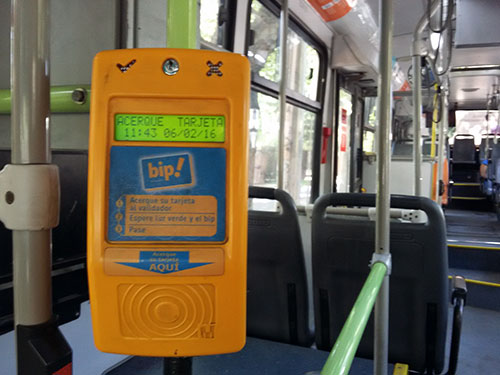Recently, the Applied Economics journal published the article Impact of the dedicated infrastructure on bus service quality: an empirical analysis, whose author is Dr. Rodrigo Troncoso, PhD in Economics, collaborating researcher of the Research Center in Social Complexity (CICS) and Professor of Econometric Theory of the Doctorate in of Social Complexity Sciences (DCCS).
 The research carried out jointly with Felipe González, Vicente Valdivieso and Louis De Grange, is related to two lines of research: the study of the quality of service of a bus system and its metrics, and the study of the factors that affect the Service quality indicators. An empirical analysis was performed to quantify the impact of different design variables on the quality of service of the surface public transport system in Santiago, Chile, in particular on three indicators: the average speed during the journey, the coefficient of variation of time of travel of the services, and the coefficient of variation of the times between buses.
The research carried out jointly with Felipe González, Vicente Valdivieso and Louis De Grange, is related to two lines of research: the study of the quality of service of a bus system and its metrics, and the study of the factors that affect the Service quality indicators. An empirical analysis was performed to quantify the impact of different design variables on the quality of service of the surface public transport system in Santiago, Chile, in particular on three indicators: the average speed during the journey, the coefficient of variation of time of travel of the services, and the coefficient of variation of the times between buses.
Data from the operation indicators calculated by the Directorio de Transporte Público Metropolitano (DPTM – metropolitan public transportation directory) were used to estimate the models proposed in this work. As explanatory variables, different system design and operation variables were used; control variables associated to the number of bus stops, passenger boardings and the level of congestion of different sections along the route were also included.
Research Conclusions
The main conclusion is that road infrastructure significantly improves the average speed of buses. Along these same lines, motorways were estimated to increase the average speed of buses significantly. Similarly, it was concluded that both segregated bus corridors, as well as exclusive tracks and bus-only tracks, reduce the variability of bus trip times, and also reduce the time intervals between buses. This translates into a better quality of service for users, as it reduces uncertainty and average waiting and travelling times upon arrival at their destination. Finally, about 75% of the variation of times between buses at the end of the route would be explained by the variation at the start of it. That is, the regularity with which the operator dispatches its buses from the terminal determines most of the variability at the end of the route.
Read the article here
